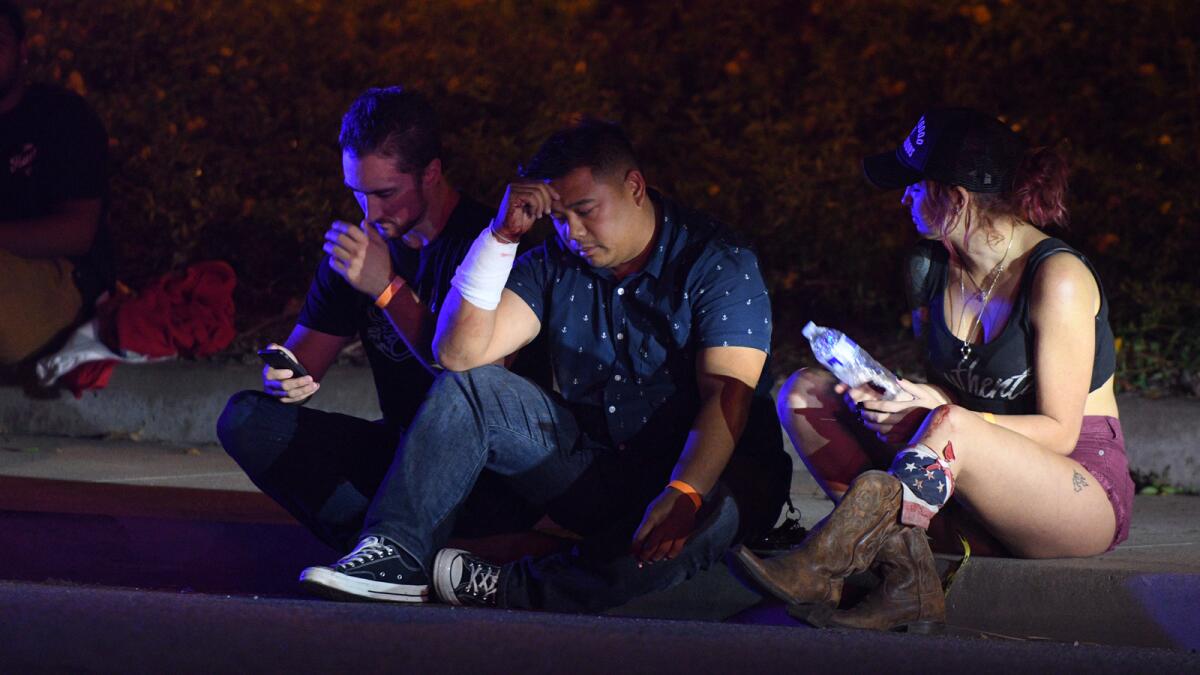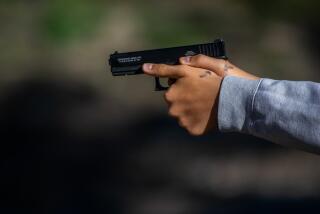Q&A: The role of PTSD in mass shootings: Let’s separate myth from reality

- Share via
Just hours after former Marine Ian David Long killed himself and 12 other people at the Borderline Bar and Grill in Thousand Oaks on Wednesday night, observers speculated that post-traumatic stress disorder played a role in the tragedy.
The Ventura County sheriff alluded to it. One of Long’s former roommates in Reseda mentioned it. Even the president of the United States said it.
But psychology experts say it is premature to suggest that Long suffered from PTSD — or that it could have prompted him to open fire in a bar packed with young adults.
“Unless someone comes forward and says this man was experiencing PTSD or being treated for PTSD, there is no reason to think he had PTSD,” said Lisa Jaycox, a behavioral scientist and clinical psychologist at the Rand Corp. in Washington, D.C., who studies how people to react to violence.
Jaycox’s previous work has shown that even among veterans who have seen combat, fewer than 1 in 5 suffer from PTSD. She also said violent behavior is not a common symptom of the disorder.
Jaycox spoke with the Los Angeles Times about myths and facts about PTSD.
Do we know for certain that the Thousand Oaks shooter suffered from post-traumatic stress disorder?
No. We know he did see combat in Afghanistan, but it’s a small portion of people who develop post-traumatic stress disorder after an experience like that.
In my own work, when we looked at people who had recently been deployed to Iraq and Afghanistan, about 14% of them suffered from PTSD. It’s not the norm.
Whenever a mass shooter has a military background, people are quick to blame it on PTSD. Does that make sense?
No. There are about 20 symptoms associated with the disorder. One of them is anger and irritability, but that is not the predominant picture of post-traumatic stress disorder. Most people who have PTSD are not violent.
What might be more pertinent here is that military personnel who have violent outbursts may be more likely than other people to own a gun privately and to be highly trained with firearms.
What exactly is post-traumatic stress disorder?
I think of it as a very human reaction to a traumatic event, and then an inability to recover.
In the wake of a mass shooting I’m sure everyone who was there will be thinking about it constantly in the days and weeks afterwards — dreaming about it, having difficulty focusing on work or relationships. But if those symptoms persist for more than a month, then that is classified as PTSD.
What are some other symptoms?
They cluster in four areas. Re-experiencing the trauma, so flashbacks, nightmares, recurrent thoughts. Then there is arousal, which includes irritability, difficulty concentrating and difficulty sleeping.
Another set of symptoms have to do with withdrawal and numbing — feeling disconnected from people and emotionally blunted. And finally, avoiding things that might remind you of the trauma — not wanting to talk about it and avoiding certain people and places.
Do most people with PTSD develop it as a result of military service?
No. It’s much more common to be exposed to it through community violence, sexual violence or sexual assault.
We’ve done work in the Los Angeles County school system that shows one-third of kids who have been exposed to community violence suffer from post-traumatic stress syndrome. Most of these kids are flying completely under the radar. It’s the 7th-grade girl sitting quietly at her desk or the 8th-grade boy playing basketball. They are not shooting people.
Are people with PTSD more likely to commit mass shootings?
I would say no, but I don’t think there is great data on that because these events are so rare. But again, there is not a high likelihood of being violent when you have PTSD.
When we think of PTSD, we mostly think about military men. Why?
Probably because they are more frequently depicted in the media and in movies.
Women are actually more at risk of developing post-traumatic stress disorder than men. Men are exposed to more accidents and injuries, they are more likely to be on the front lines of war, or be mugged at gunpoint. But women are more likely to develop PTSD after an interpersonal trauma. Getting attacked by a coworker is a different thing than a stranger mugging you. That carries the meaning of not knowing who can you trust, whereas being attacked by a stranger is usually a one-off.
This interview has been edited for length and clarity.







